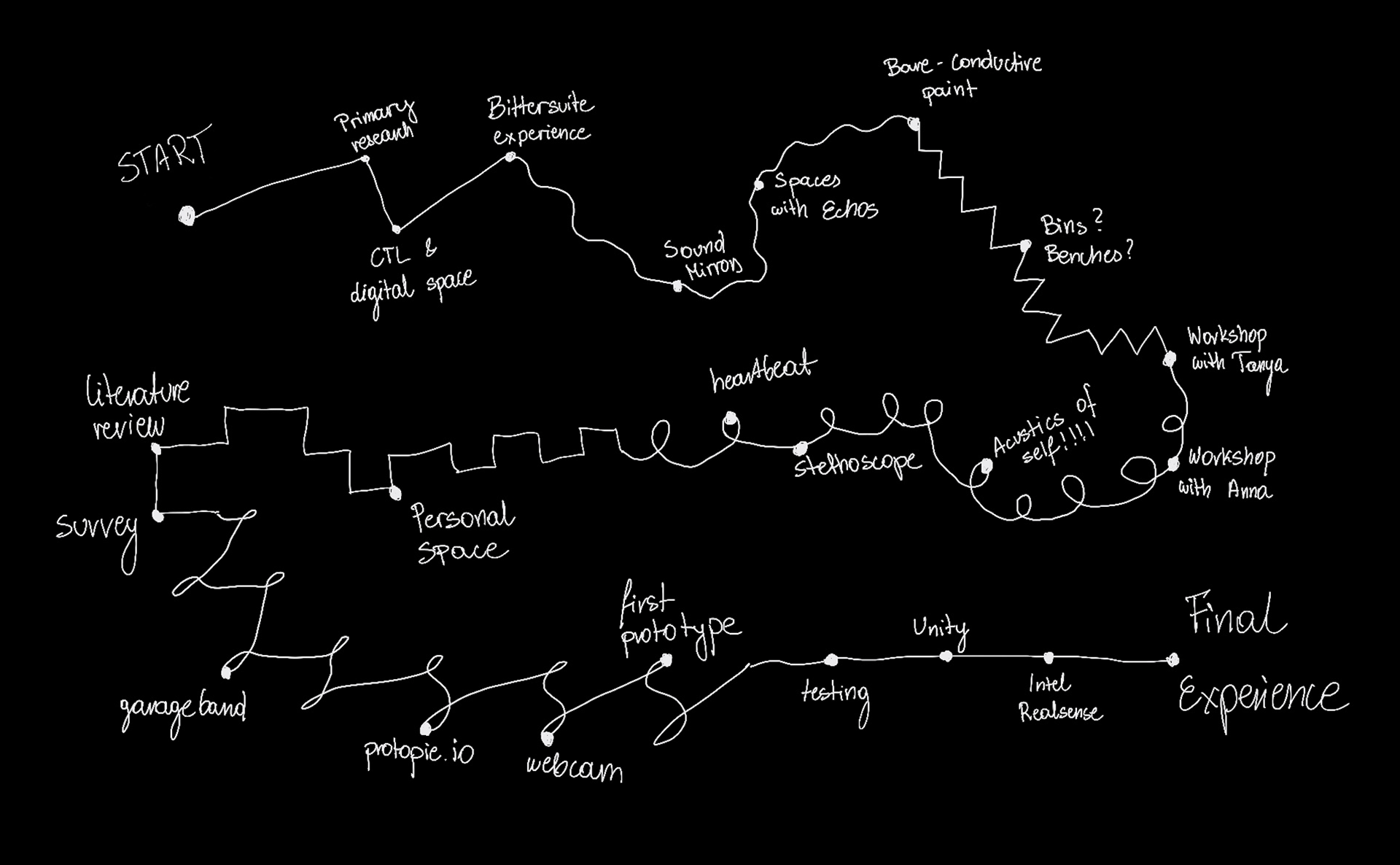Upon completing this module I have identified 4 fundamental areas that I have developed in as a designer.

An illustration of our challenging but productive journey through this module. Created by Ula.
Prototyping
Prototyping is an area where I have a lot of mixed feelings about as I believe that I was able to improve in a certain way, yet was not able to apply things that I have already learnt. Testing is an important aspect of the design process that I have been mentioning throughout this blog and believe is crucial. However, with this project, we were not able to test our final idea as much as we hoped to. I am very glad that it didn’t affect the outcome and the presentation was still a success, but it leaves me with a question: what if we have tested our experience? On a positive note, i believe that I was able to improve in this area because we worked with something that isn’t tangible for 7 weeks. We managed to create a space which our entire experience was based on. We created a small world that we had complete control over, where every detail was thought through. It was very interesting and something I haven’t done before.

Team Work & communication
Team work and communication is always something I find myself growing in. This project involved a lot of decision making and we all found ourselves to have very different opinions on certain things which sometimes was hard. Nevertheless, these issues were always resolved within the group very quickly and we always moved forward being on the same page as a stronger team. Furthermore, this time I worked with my good friend Ula whom I have worked with before, but on small projects. These 7 weeks have shown that both of us, being very passionate with firm opinions on things, are able to find compromise peacefully. We managed to separate our work and friendship to achieve perfect balance and come out of this project as closer friends and better designers.

VISUALISATION
This term we designed a sound map - a grid that relies on the invisible connection between two devices and is controlled by us manually. It was hard to not hear something ourselves when we played it in others’ headphones while they walk on the grid, but it was very new and interesting. We managed to create 81 unique sounds and visualise how we see this grid in two different dimensions - digital and physical. We explored the concept of personal space and were able to materialise it and bring it to life in the shape of sound. Furthermore, I was successfully able to use the skills I learnt in Collaborative unit which is animation, to visualise my ideas and get them across to my team efficiently which made the process easier and quicker.

RESEARCH & CONCEPTUAL THINKING
When it comes to research, I also believe I didn't improve as much as I hoped since we didn’t do any user testing to collect more data and thoughts on our experience. However, this was the first time I used surveys in my work. Furthermore, following from one of our feedback sessions with John and Al, I realised that we were able to create a design research method which is why I decided to place this section along with conceptual thinking. As an idea, using a grid could be an interesting way to investigate sound and emotions. This new method could be great to explore people’s feeling and boundaries of sonic tolerance. This could be done through involving different types of controversial sounds to understand how people feel and where would they place themselves on the grid depending on the spectrum of emotions. For example, where would they locate the sound that makes them most annoyed or most happy.

